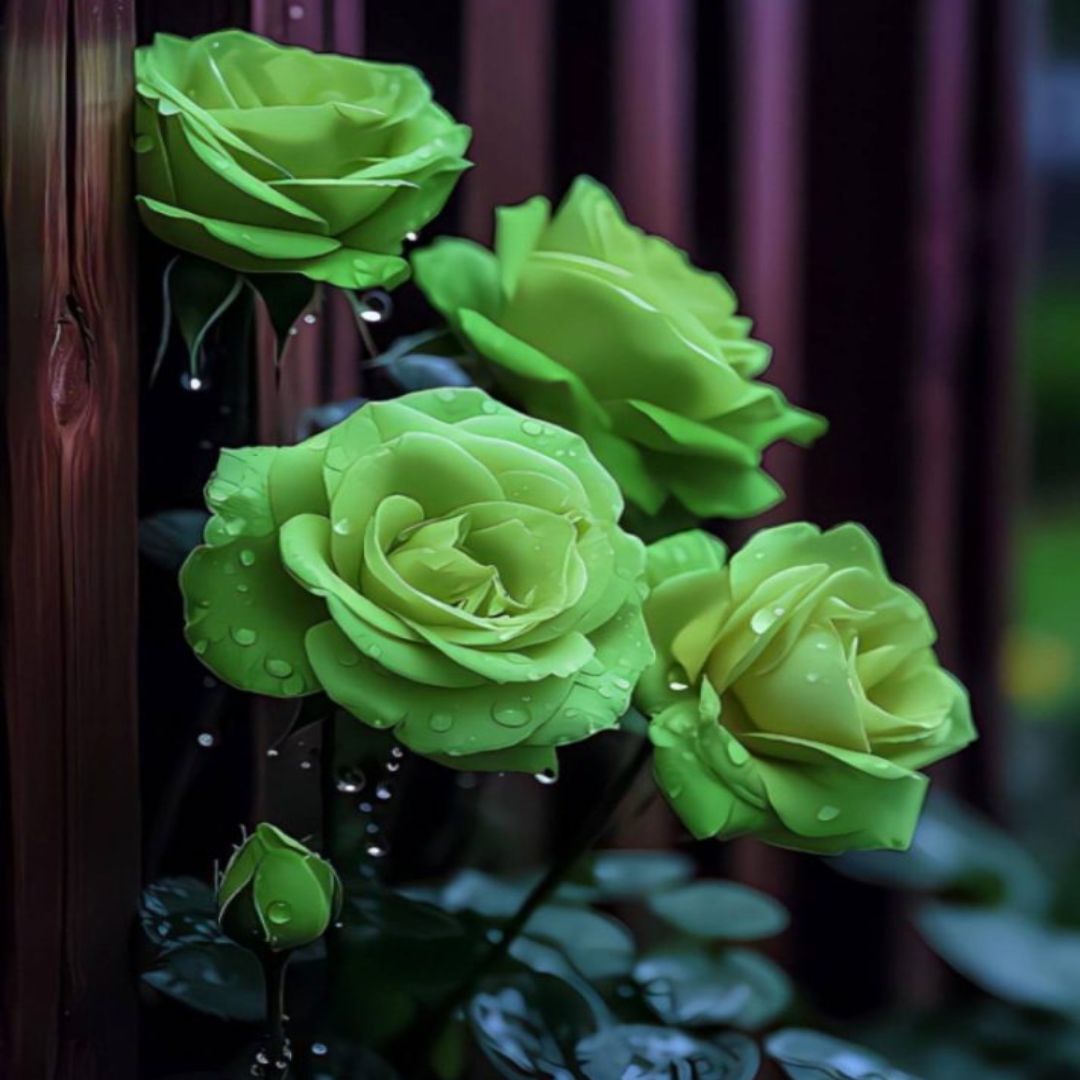Whether you are looking for rare plant varieties or those that offer flamboyant looks, you have a wealth of choice when it comes to unusual houseplants. You have choices in everything from cacti, succulents, flowering types or those that offer exotic and unusual looking foliage.
Lets discuss some of the more unusual houseplants that are sure to grab everyone’s attention and bring wonder and beauty to your home
Jewel Orchid (Macodes petola)
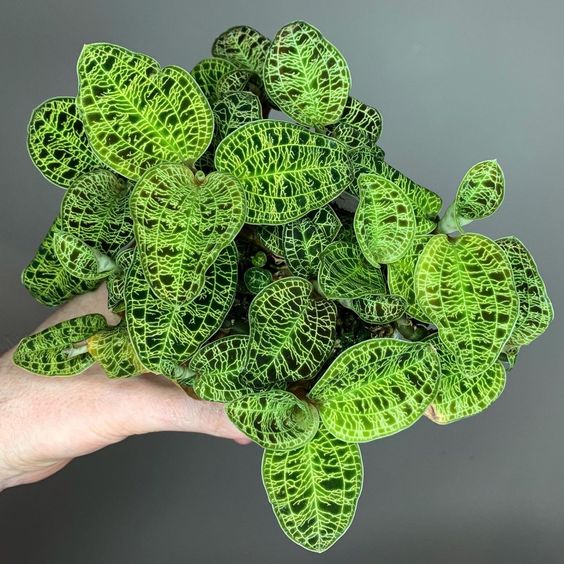
Macodes petola, or the jewel orchid is quite simply breathtaking. This orchid is all about the foliage, rather than the flowers. The leaves have a velvety texture and spectacular irregular yellow veining that sparkles in the light with an electric glow.
The name jewel orchid comes from the fact that the veining of the leaves sparkles like a precious jewel. Definitely a precious addition to my houseplant collection.
Macodes petola has a spreading habit, growing around 18 inches tall and wide. Although fancy in appearance, Jewel Orchid is a great choice for beginner gardeners with its ease of care, robust growth and year-round visual appeal.
Cooper’s Haworthia (Haworthia cooperi)
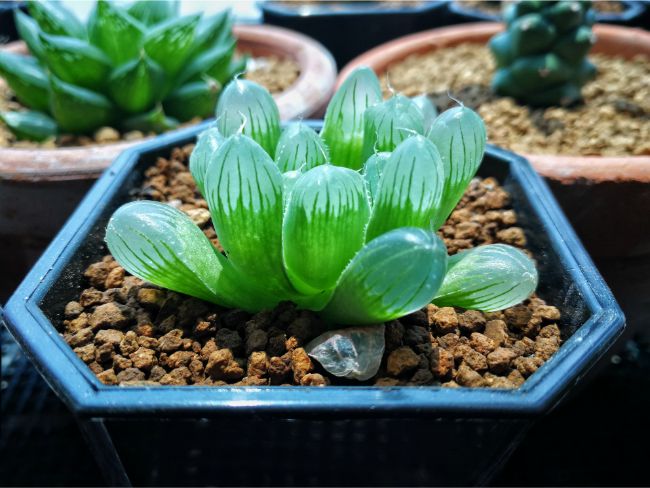
Although Cooper’s Haworthia plants are small, they are sure to grab all the attention with their big and unusual looks. This easy-to-grow South African native is a slow- and low-growing succulent that forms into a densely packed rosette of green to bluish-green cylindrical leaves.
Each rosette contains around 40 of the thick and swollen stubby leaves that are marked on their tips in a distinct and translucent pattern. This transparency allows light to reach the stems buried several centimeters into the soil.
Additionally, the leaves are said to be so transparent that you can actually read through them. If the unusual foliage was not enough, in spring through summer, the plant sends up an inflorescence containing small tubular flowers that are white. Cooper’s Haworthia will not disappoint when it comes to being unusual houseplants and a real conversation starter.
Marimo Moss Ball (Aegagropila linnaei)
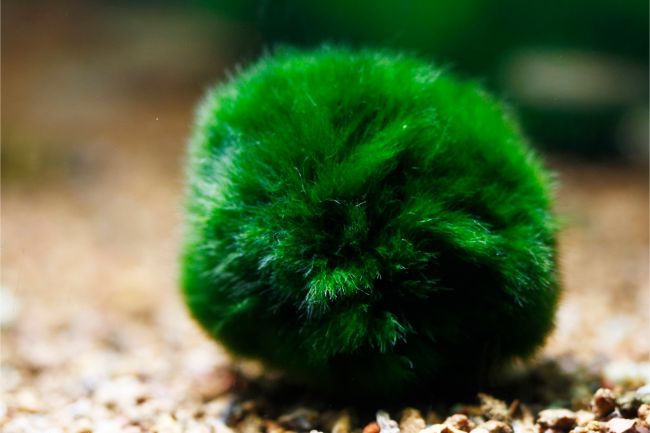
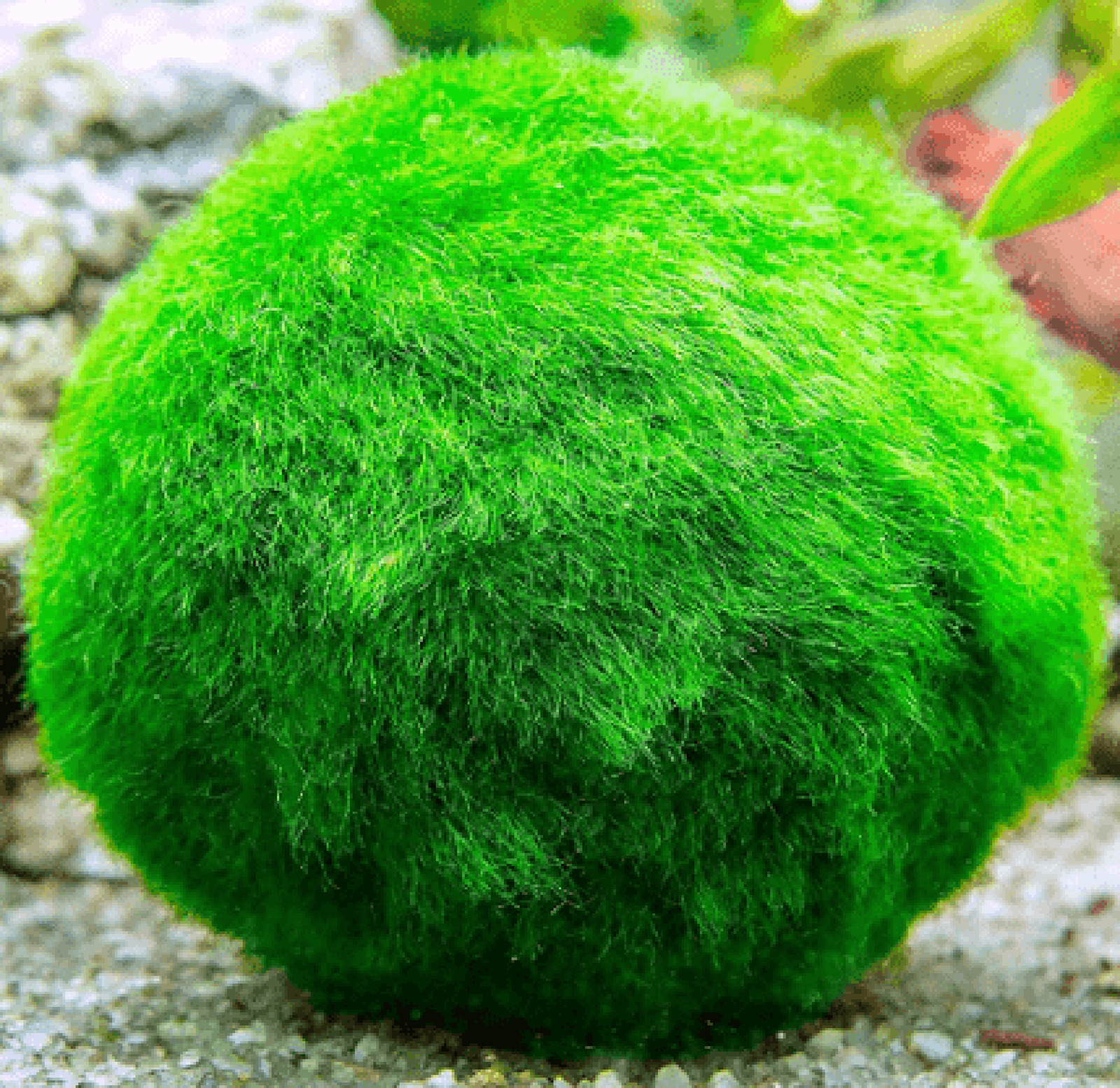
An aquatic plant that is becoming just as rare in the wild as it is unusual, Marimo Moss Ball’s unique rounded form is sure to get everyone talking. The slow-growing, dark green balls are made up of freshwater filamentous green algae and in its large, rounded form are found only in two lakes in the world – Lake Myvatn in Iceland and Lake Akan in Japan.
Marimo Moss Balls are remnants from the ice age and have no center core, with the filaments branching out in all directions from the plant’s center and giving it a round, velvety appearance.
These are easy to grow indoors whether you add them to an aquarium or an aquascape, as well as making a fascinating and decorative addition to any glass container. In folklore, Marimo Moss Balls are known as charms for everlasting love and good luck.
Desert Rose (Adenium obesum)

If you have a sunny and warm indoor location, adding a Desert Rose to your houseplant collection will surely grab the eye’s attention with its unique form. Everything about this perennial succulent screams “look at me” from its large, swollen base, called a caudex, to its twisted grayish-green leafless branches filled with leathery oval green leaves springing from the branch tips.
Adding to the plant’s unusual form and beauty are the striking 2-inch bell-shaped flower clusters blooming in a host of colors from pink, red, rose, white, purple or a mix of two hues with yellow throats. Flowers can be single, double or triple.
Desert Rose is also suitable used as a bonsai plant and resembles a small, blooming tree. When grown indoors, plants typically grow around 3 feet tall and can live hundreds of years.
Lifesaver Plant (Huernia zebrine)
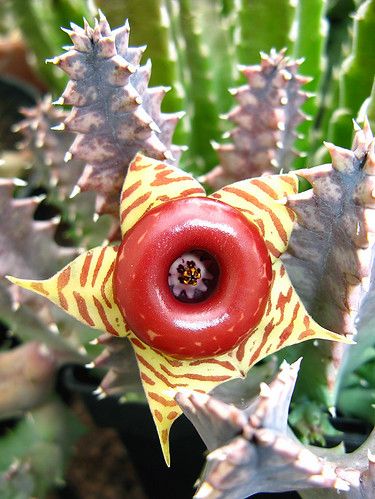
This native of southern Africa gets its common name from the exotic and unusual flowers resembling small lifesavers. This cactus-like succulent may only grow 6 inches tall, but don’t let its small size fool you because this plant is big on looks producing star-shaped yellow flowers with red ᵴtriƥes that have a pronounced and glossy red center ring.
The 1.5-inch to 3-inch diameter flowers bloom from late spring throughout early fall, allowing you to enjoy the odd but attractive blooms almost year-round.
Low-growing green stems lined with fleshy prickles are either five-sided, square or round and form a dense mat, adding even more interest to this easy-to-grow plant. Huernia zebrine certainly make unusual houseplants and will add a curious appeal used in a bonsai pot, standalone container or planted in a succulent dish garden.
Corkscrew Plant (Albuca spiralis)
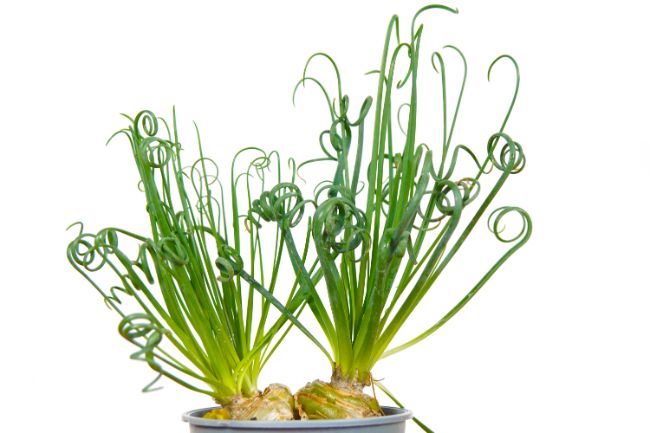
Corkscrew plants might be small in stature but they are most certainly big on looks. This South African native earns its name with the unique long thin and thick green leaves with a curling twist at the top that arise from an underground bulb.
Leaves average around a 6-12 inches long and are most abundant during winter. The amount of twisting is affected by the amount of light – less light means less twist. If the showstopper foliage was not enough, in springtime, fragrant greenish-yellow helicopter-like flowers that smell like vanilla form on long spikes, with 10 to 20 flowers forming on each.
Even when not in bloom, these unusual houseplants are attention getters and are sure to be a conversation piece inside your home with their unique good looks.
Coral Cactus (Euphorbia lactea)
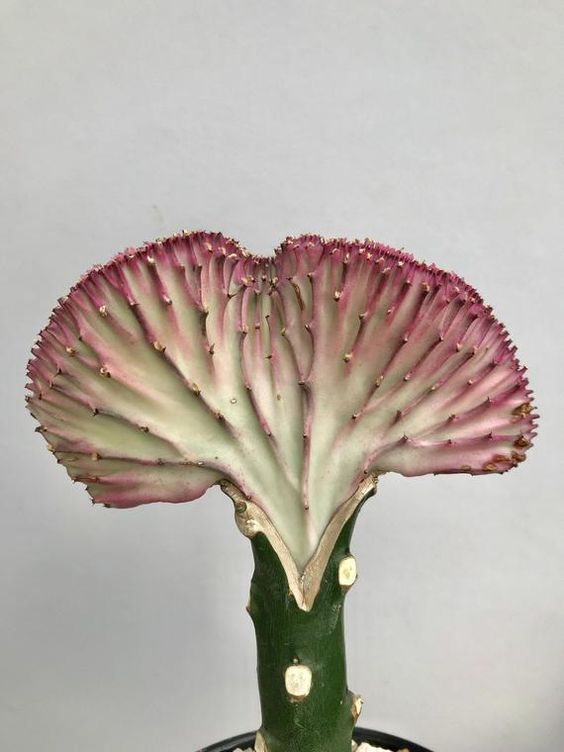
Coral Cactus is not a cactus at all, despite having similar care requirements and looks, but is a rare succulent comprised of two different species of the Euphorbia genus and grafted together. The succulent gets its common name Coral Cactus from sporting its distinct and unusual wrinkled crest that resembles coral.
The eye-catching crest can be white, purple, yellow, red or green. If the colorful and bizarre looking crest was not enough of a talking point, on rare occasions older plants will produce purple or pink blooms.
It adds a decorative appeal when mixed with other containers of indoor succulents with similar needs. Despite Coral Cactus’ special looks, its low-maintenance requirements make it a perfect choice for novice indoor gardeners.
Venus Flytrap (Dionaea muscipula)
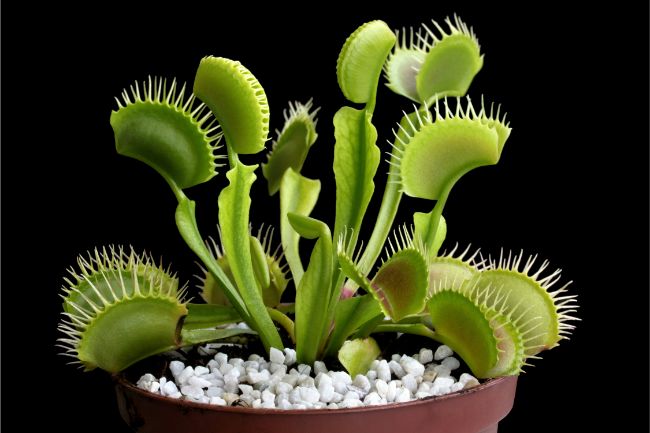
Of all the carnivorous plants, Venus Flytraps are the most well-known and probably the most misunderstood when it comes to their care. Even so, this southeastern United States native is sure to add a curious appeal when added to your houseplant collection.
Plants produce a low-growing green rosette averaging around 5 inches tall and 8 inches wide, that is made up of around eight bristly leaves. The top of each green leaf contains the bristly, hinged trap, which snaps together when an insect triggers the fine hairs inside.
It can take up to a week or more for the Venus Flytrap to digest fully the imprisoned insect. Once digested, the trap opens again waiting for the next hapless visitor, which is sure to grab everyone’s interest watching the little plant consume its meal. Mature plants produce long stems containing white cup-shaped flowers in springtime.
Common Sundew (Drosera rotundifolia)

Sundews belong to a large family of carnivorous plants with over 194 species, but one of the most common and easiest to grow is the Common Sundew. However, there is nothing common when it comes to this Sundew’s interest-grabbing appearance.
It also goes by the common name Round Leaf Sundew based on the round traps at the end of each long petiole, which form into a rosette. The round lime green traps look like something out of a science fiction movie, lined in long sticky tentacles that are red.
The sticky and sugary substance covering the tentacles and the red color attract unsuspecting insects into the trap. The insects remain stuck in the substance and are slowly digested by the sundew. With its ease of care, Common Sundew is a great choice for carnivorous plant beginners and its unusual appearance and eating habits are sure to gain everyone’s attention, young and old alike.
Dolphin Succulent (Senecio peregrinus)
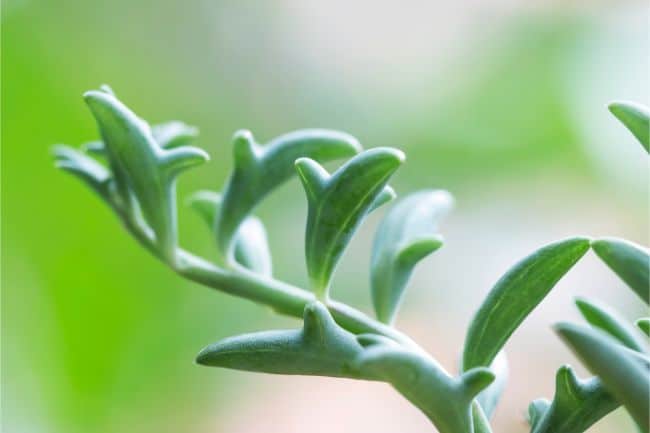
Dolphin Succulent, also called String of Dolphins is rightfully named with its unusually shaped foliage resembling the graceful mammal. Although a bit hard to find, Dolphin Succulents are easy-to-grow, unusual houseplants that are sure to grab attention wherever they are placed.
The green, thick and fleshy dolphin-shaped leaves line green fleshy stems that can grow 1 to 3 feet long, which make a hanging basket stand out. If the dolphin-shaped leaves were not interesting enough, each leaf contains a long translucent line that allows light to get to its interior so the plant can tolerate lower light conditions.
As an added bonus, white pom-pom-like flowers bloom on green fleshy stems. Dolphin Succulent plants will shine planted in a dish garden with like plants, in hanging baskets or used in a single container where they can showcase their eye-catching and unusual look.
Living Stones (Lithops sp.)
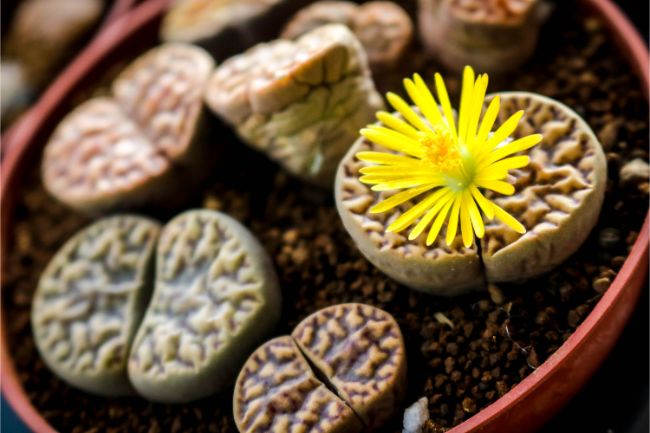
With around 37 species and all resembling the other, Lithops, commonly called Living Stones or Flowering Stones earn their name with their interesting shapes bearing a resemblance to rocks so they blend in with their natural environment and aren’t eaten.
These are definitely unusual houseplants and the different varieties vary in the shape of the plant, and its color, with some varieties colored pink, green, brown, rust and gray. Plants stay flush to the ground, growing only a couple inches tall with one or several bulbous set of leaves seemingly fused together.
Once a leaf pair matures, a yellow or white daisy-like flower emerges from the fused area. Living Stones are a perfect choice for novice gardeners or those who desire a conversation worthy plant to add to their houseplant collection.
Bat Flower (Tacca chantrier)

Bat Flowers truly earn their rating as flamboyant and unusual houseplants with their exotic flowers resembling bats. This native to southern Asia sports bat wing-shaped flowers that grow up to 12-inches across and are such a dark purple they almost look black.
If that was not interesting enough, long threadlike whiskers hang from the flowers that are around a foot long. Once a plant develops at least two leaves it starts blooming and can produce eight flowers each year. The almost black flowers stand out against the large, glossy green foliage.
A more recent variety, Tacca integrifolia has white wings. Given good air circulation and proper care, a Bat Flower plant with its extravagant blooms is sure to be the talk of the neighborhood for quite some time.
Staghorn Fern (Platycerium bifurcatum)
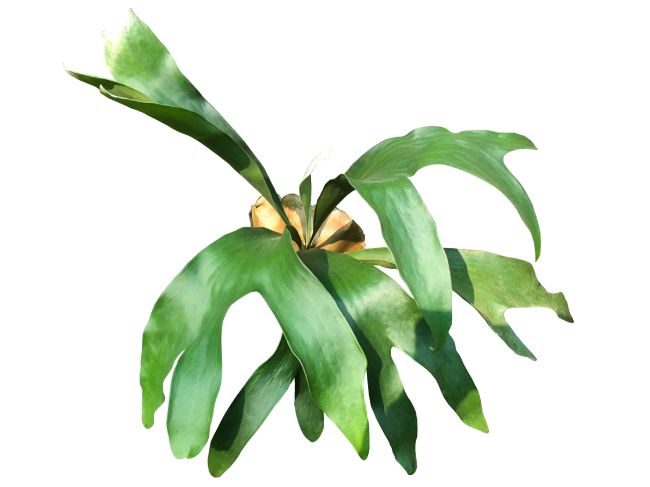
Big, bold, beautiful and dramatic describes a mature Staghorn fern and that is the statement it makes wherever placed inside the home. This evergreen epiphytic fern native to the rainforests of Australia gets its common name due to the thick silvery-green and leathery leaves resembling elk antlers that are covered in fine hairs giving them a furry feel.
These large eye-catching and fertile leaves containing spores can grow 3-feet long. Smaller inconspicuous leaves cover the large round center crown. Staghorn ferns are happy clinging to decorative boards, driftwood, rocks, trees, sides of containers or a wire basket. This multifunctional beauty fits a wealth of décor designs, making an eye-catching specimen that can grow quite large.
Red Mistletoe Cactus (Pseudorhipsalis ramulosa)
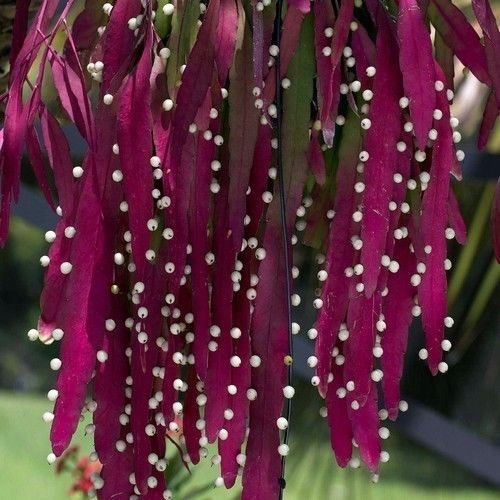
For a real showstopper that is sure to catch everyone’s eye with its brilliantly colored foliage and unusual after blooms, you should grow the Red Mistletoe Cactus. The plant is a shrubby epiphytic succulent with graceful and freely branching flat stems that get redder with the more light the plant receives.
Each flat branch can grow up to 4 feet long. The South American native produces small white blooms that line the edges of the ribbon-like stems and then change to small white mistletoe-like fruits, giving the entire plant an attractive and exotic looking appeal.
The tiny round and white fruits lining the branch edges like little balls stand out against the reddish stems. These hardy and low-maintenance plants will add an unusual and tropical appeal wherever they are hung indoors. Best of all, they are easy to grow although they may be a bit hard to locate.
Wax Plant (Hoya carnosa)

One look at the waxy blooms and you will see why this plant gets its common name Wax Plant. Although the plant will grow well in a container, it really puts on a show when planted in a hanging basket. It also has a climbing nature, so it also works well used on an indoor trellis or other wire support.
Although it’s not a succulent, Wax Plants produce thick, waxy and glossy leaves that are green and its variegated form can be mixed with green, pink, white or yellow. Each leaf can grow up to 4-inches long and the long leaf-filled stems can grow 4-feet long when grown as a houseplant.
In summer, tightly formed clusters holding anywhere from 10 to 30 flowers form, which develop into very distinctive and attractive star-shaped blooms with red centers that resemble wax. The flowers are so exquisite they almost look fake.
Depending on the variety, blossom colors can be white, various shades of pink or a mix of the two. These hardy, eye-catching plants are easy to maintain, making them the perfect choice for novice indoor gardeners.
Pregnant Onion (Albuca bracteata)
The Pregnant Onion is an unusual and curious looking plant native to South Africa and its low-maintenance requirements make it a breeze to grow. The entire bulbous plant resembles an onion, with the greenish bulb sticking out of the ground and as it matures, small onion-like bulbils grow off the mother plant’s bulb, thus its common name.
Mature bulbs can grow up to 5 inches in diameter. Adding to its looks are the long, green strap-like and arching leaves that form from the center of the bulb and can grow up to 12-inches long.
Periodically throughout the year, the Pregnant Onion sends up a flower stalk that can grow 60-inches long and is covered in a mass display of fragrant small white flowers striped in green. These unusual houseplants thrive on neglect and their unusual form make them a conversation piece wherever situated indoors.
Fishbone Cactus (Selenicereus anthonyanus)
Fishbone Cactus, also commonly called Zigzag Cactus is a variety of climbing cactus that is native to the rainforests of southern Mexico. It gets its common names from the thick, fleshy green stems that form into a distinct zigzag form.
If the foliage did not add enough of an indoor interest with its unusual shape, the cactus is a nocturnal bloomer, with dark pink or white fragrant blooms developing in spring and summer, when given enough light.
The stunning flowers are large, growing up to 5-inches wide and 8-inches long on stems growing up to 4-feet long. Each bloom lasts only one day, opening in late afternoon and closing the next morning, making it an even more curious and unusual flowering plant.
Although it will climb on a trellis-like support, it makes a robust display planted inside a hanging basket where it can develop into a large plant averaging 2 to 4 feet wide. This low-maintenance cactus requires very little care and is a good choice for the novice gardener looking to add some unusual houseplants to their collection.


